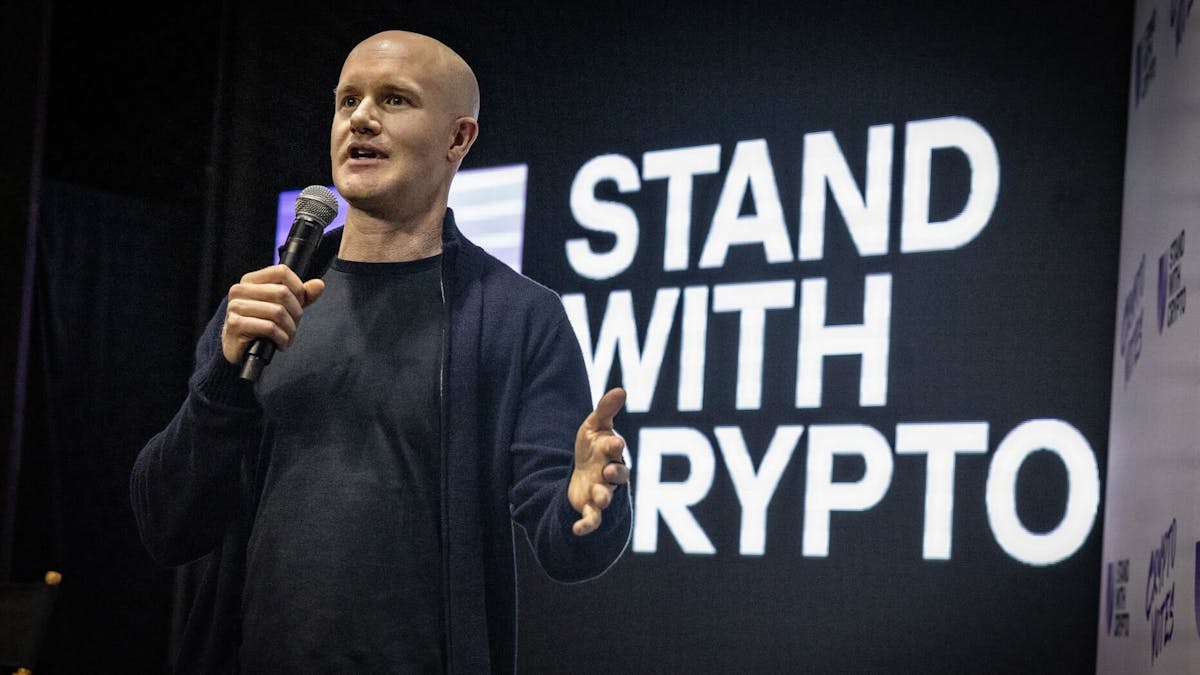Welcome to the official beginning of the cryptocurrency regulatory vacuum.
Written by Yueqi Yang, The Information
Compiled by: Block unicorn

Welcome to the official beginning of the cryptocurrency regulatory vacuum. This is where we are now because Coinbase, the largest cryptocurrency exchange in the United States, said it has reached an agreement with the U.S. Securities and Exchange Commission staff to dismiss a lawsuit accusing the company of operating an illegal stock exchange (at least that’s what Coinbase said and we’ll have to wait until the SEC confirms the news after the committee votes).
Coinbase shares rose 2.2% on Friday morning last week, U.S. time. The news triggered important regulatory progress in the cryptocurrency industry, especially after the SEC decided to abandon its long-standing lawsuit against Coinbase, which appeared to have entered a regulatory vacuum. Coinbase CEO Brian Armstrong said in a post on X that the dismissal means Coinbase will not pay any fines or make any changes to its business, adding that the company has spent approximately $50 million litigation the case.
It appears that the top financial regulator is suspending decade-old securities rules related to cryptocurrencies as it waits for Congress to enact new rules if it can pass any rules. These deliberations in Congress are likely to drag on for some time. Basically, cryptocurrency companies are promised regulatory exemptions as Trump’s crypto task force tries to figure out the next step for the industry.
While all this sounds optimistic for the cryptocurrency industry, things are not all bright. Today we saw some warnings about the risks faced by cryptocurrencies: Just two hours after Coinbase released the good news, Bybit, the world’s third-largest cryptocurrency exchange, confirmed that it had suffered a hacker attack of more than $1 billion, which was the largest in cryptocurrency history. hacking incident.
When such a hack occurs, panicked investors can withdraw money on a large scale, which could deal a fatal blow to the exchange if it does not have enough funds to respond to withdrawal requests. Currently, Bybit CEO Ben Zhou said the exchange has enough funds to cover the hacked amount and is still processing withdrawals normally. Despite this, both Bitcoin and Ethereum prices fell, while Coinbase’s share price rose in the morning after news of the SEC’s action and fell 8% in afternoon trading.
It may take days or weeks for this situation to become clear before any chain reaction becomes apparent. In addition to revealing the inherent risks of cryptocurrencies, this hack also shows that the current protective measures of traditional financial institutions can protect them from cryptocurrency risks. That’s a relief for banks and traditional stock exchanges that are still closely regulated by the SEC and federal banking regulators.
These companies have long argued that the cryptocurrency industry now has an unfair advantage in regulation. For example, when Nasdaq met with the task force earlier this month, it complained that it asked the SEC to set a clear deadline for this “laissez-faire” status of cryptocurrency exchanges. The exchange operating giant has previously expressed its desire to launch a cryptocurrency business. Banks are also hoping to launch cryptocurrency services for bulk traders and investors, possibly to avoid losing customers interested in cryptocurrencies and turning to cryptocurrency exchanges and trading companies. But they still need approval from banking regulators to do so.
This week, a heavyweight coalition of bank lobby groups asked the Trump administration to find a way to ensure it does not miss the game. This series of incidents not only highlights the vulnerability of the cryptocurrency industry, but also reflects the advantages of traditional financial institutions in terms of supervision and protection measures. With the continuous development of the cryptocurrency market and the gradual formation of the regulatory environment, how to balance innovation and risk in the future remains an issue worthy of attention.
Welcome to join the official social community of Shenchao TechFlow
Telegram subscription group: www.gushiio.com/TechFlowDaily
Official Twitter account: www.gushiio.com/TechFlowPost
Twitter英文账号:https://www.gushiio.com/DeFlow_Intern



